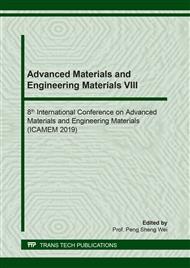p.481
p.487
p.493
p.499
p.505
p.511
p.517
p.522
p.527
Catalytic Cracking of Oleic Acid over Zeolites
Abstract:
Compared with bio-oil from sawdust (common lignocellulosic biomass), the bio-oil obtained by fast pyrolysis of coffee waste has a unique feature to contain a significant amount of fatty acids such as oleic acid and palmitic acid. It is necessary to conduct C-C cracking of fatty acids present in coffee-waste bio-oil to maximize gasoline fraction (C5-C12) production. In this work, catalytic cracking of oleic acid as a model compound for the fatty acids was carried out in batch reactors to understand the effect of major parameters such as zeolite type (HZSM-5, SAPO-11, MCM-41), reaction temperature (380-500 °C), and reaction time (0-50 min) on gasoline fraction production. The GC-MS analysis showed hydrocarbons and aromatics to be major compounds present in the gasoline fraction irrespective of zeolite type and reaction conditions. At 400 °C and 0 min reaction time, the yield of gasoline fraction was 18.6, 6.7, and 33.1 % with HZSM-5, SAPO-11, and MCM-41, respectively. As reaction temperature increased to 500 °C, the total gasoline fraction yield reached 43.7 and 22.7 % with SAPO-11 and MCM-41, respectively. In all the catalysts, the content of aromatic compounds in the gasoline fraction increased with the increase in reaction temperature and reaction time. Meanwhile, the formation of hydrocarbons in the gasoline fraction showed different optimum temperature with catalyst: 11.8 % yield with SAPO-11 at 500 °C and 27.0 % yield with MCM-41 at 400 °C.
Info:
Periodical:
Pages:
517-521
Citation:
Online since:
July 2019
Authors:
Keywords:
Price:
Сopyright:
© 2019 Trans Tech Publications Ltd. All Rights Reserved
Share:
Citation:



